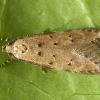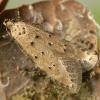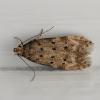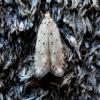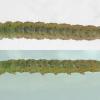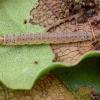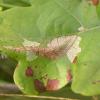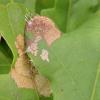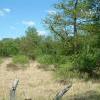35.153 Pseudotelphusa paripunctella (Thunberg, 1794)
Status and Distribution
A local, occasionally locally common, species across widely scattered parts of the British Isles. Those found in the more northerly and westerly parts of its range (with the larva feeding mainly on bog-myrtle) are reported to be an ecologically distinct race from those with a more southerly distribution in the British Isles (which feed mainly on oak). Apparently absent from Isle of Man, Orkney, Shetland and the Channel Islands as well as large swathes of north-east England and south-east Scotland.

Provisional map
Foodplant and Larval Feeding Signs
Quercus spp. (oak), see plant distribution, Myrica gale (bog-myrtle) and Betula pubescens (downy birch).
In Europe also on Fagus (beech) and Hippophae rhamnoides (sea-buckthorn).
Records with comments on larval feeding or where habitat detail is given, in Scotland, northern England, parts of west Wales and Ireland (K. Bond pers. comm.), are primarily associated with bog-myrtle. Those bred in the rest of England are almost all associated with oak. The ecological distinctiveness may however be less clear cut than thought by the discovery that at three locations (in northern Scotland (VC108), south Lancashire (VC59) and Herefordshire (VC36)) the moth has been bred from birch and at the last of these it was also bred from oak. The most south-westerly reports of moths being bred from bog-myrtle are south Cheshire (VC58) and west Wales (VC46) but at some of the sites where the moth occurs, in Cheshire, Lancashire and Cumbria, birch and oak are also present. Research into the potential use of the three plants at these sites would be worth further investigation.
Feeds in spun leaves.
Habitat
Those on oak are associated with young trees growing at the margins of woods, on heaths or in hedgerows while those on bog-myrtle are found in fens, bogs and damp patches of heathland.
At the Lancashire birch-breeding site the larva was found on the drier edges of a lowland raised bog where both young oaks and bog-myrtle are close by (see general photograph of site).
Finding the Moth
Larva: on bog-myrtle feeds in a tightly spun tip of a shoot containing much frass; the larva feeds within, skeletonising the leaves but leaving the outer lower cuticle intact. The larva has been found at the very early date of 3rd July (1989) on Quercus in Devon. On the continent the species can be double brooded in southern Europe with larvae in June and July but in the British Isles it is single brooded and the Devon moth did not emerge until June of the following year.
A larval colouring diference has been noted relating to larvae found feeding on Betula nana which had the head, prothoracic and anal plates black (as opposed to the usual light ochreous). This reported by R J Heckford and mentioned in the Gelechiidae of North-west Europe (Gregersen & Karsholt, 2022).
Adult: on bog-myrtle, is difficult to disturb during the day, flies at sunrise and sunset and comes to light.
Similar Species
In Britain it is reported that the ground colour of the moth largely depends on the food-plant used by the larva. On oak, specimens are reported as usually yellowish-brown while those on bog-myrtle are darker grey-brown. In Europe the ground colour of the forewing is, to a certain extent, correlated with the host plant of the larva. However there is much variation from region and hostplant and as there are no genitalic differences, P. paripunctella is regarded as a species with some intraspecific variation.
This has implications when deciding upon the identity of specimens in more southerly locations where potential confusion between Teleiodes wagae and any greyish specimens of P. paripunctella might occur. Although grey forms of P. paripunctella generally have more white-tipped scales in the forewing, dissection may be advisable when worn, greyer forms of P. paripunctella are encountered within the distribution range of T. wagae. The usual yellowish-brown specimens of P. paripunctella from oak will not cause such problems.
Single brooded from mid-May to mid-July.
Earliest: 17th April 1983 (VC55) is surprisingly early. Next earliest 28th April 2010 (VC37)
Latest: 10th August 2013 (VC11)


